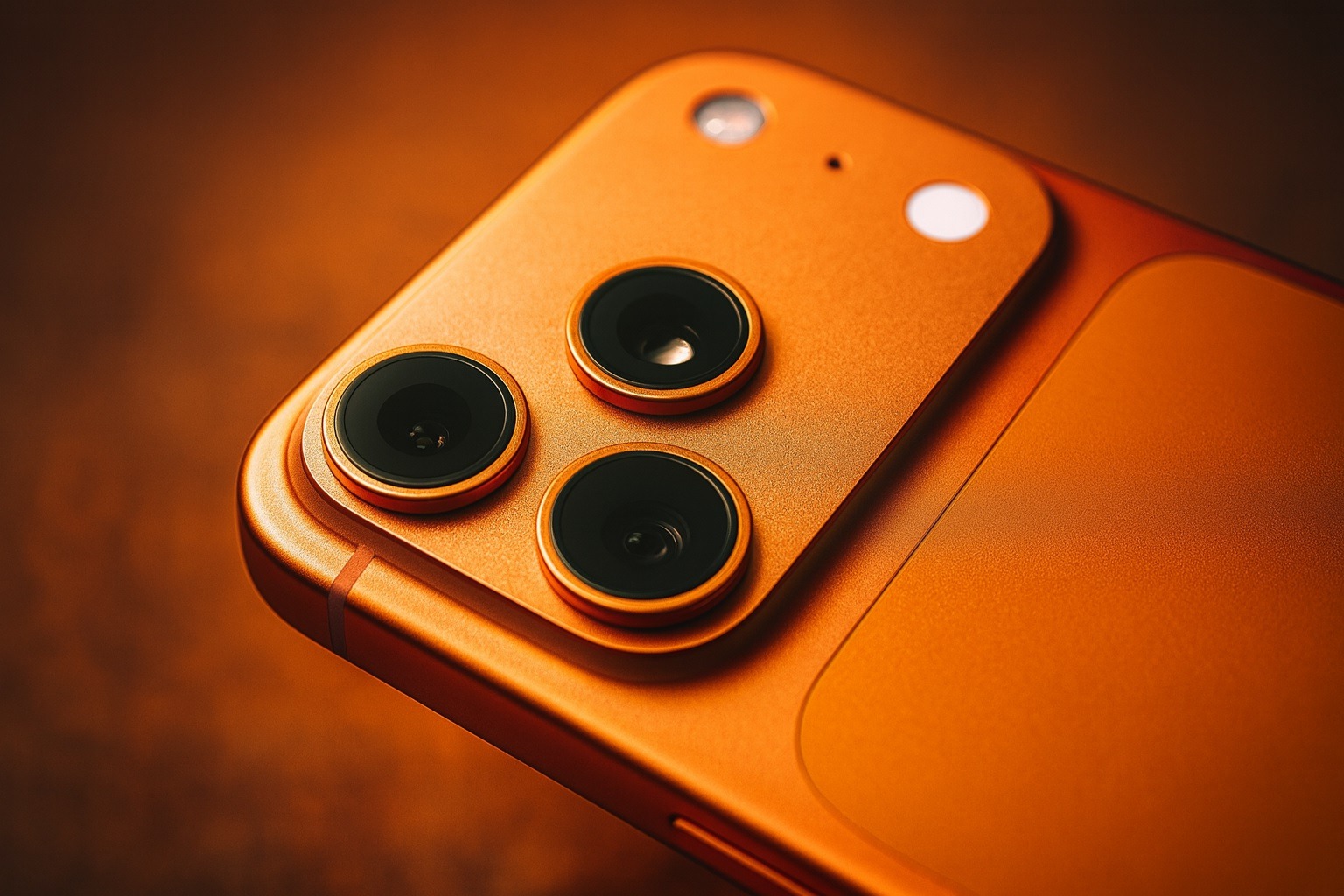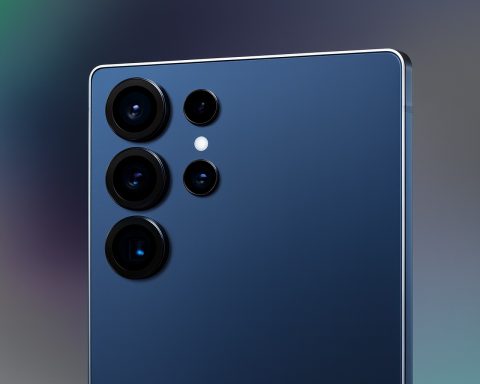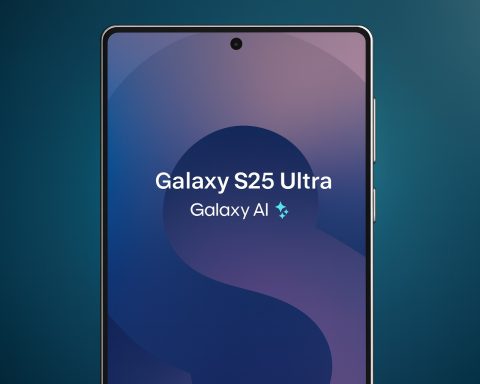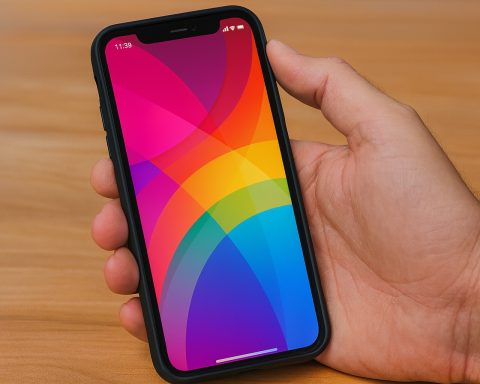- Major upgrades. The iPhone 17 lineup (standard 17, Pro, Pro Max, and new thin iPhone Air model) now supports a 120 Hz OLED ProMotion display and the A19-series chip with vapor-chamber cooling for peak performance [1] [2]. In practice, reviewers say the faster refresh “makes such a huge difference” in smoothness and brings the base model up to par with the Pros [3]. Apple claims the Pro models deliver “the best-ever performance, camera systems, and battery life” thanks to this new design [4].
- Performance & software. In testing, the iPhone 17 Pro Max set new battery benchmarks for iPhone. Tom’s Guide reports even the slim new iPhone Air lasted about 12 hours in a web-browsing test – actually beating Samsung’s Galaxy S25 Ultra – and the regular iPhone 17 lasted about 45 minutes longer [5]. The phones ship with iOS 26, which adds new “liquid glass” lock-screen customizations (photo shuffle wallpapers, depth effects) that Tom’s Guide reviewer John Velasco calls “blowing me away” [6]. However, critics note Apple’s on-device AI features remain weak; Velasco complains the iPhone 17 has “practically no new Apple Intelligence features” and lags Google/Samsung in AI-powered tasks [7].
- Camera system. The iPhone 17 Pro and Pro Max debut triple 48MP “Fusion” cameras (main, ultra-wide, telephoto) including a record 8× optical-quality zoom [8]. Even the plain iPhone 17 keeps a 48MP main sensor (the same as last year’s Pro) plus Apple’s new 18MP Center Stage selfie cam. Reviewers praise the upgraded imaging: John Velasco says the iPhone 17’s main camera is “a low-light master” that works magic in darkness, often outperforming rivals like Samsung and Google in night scenes [9] [10]. (In one side-by-side test he notes that in pitch-black conditions “none [of the Galaxy S25 or Pixel 10] come close to matching the magic that is the iPhone 17 in low light” [11].)
- Introducing iPhone Air. Apple’s new iPhone Air is an ultra-thin, 6.5‑inch iPhone designed for minimalism. It achieves a 5.64 mm body (≈12 g lighter than the iPhone 17) by removing features: it has only a single 48MP rear camera (no ultra-wide or telephoto) [12], no stereo speakers, and a smaller battery [13] [14]. It also drops the nano‑SIM tray and relies entirely on eSIM technology [15]. The Guardian notes this trade-off: the iPhone Air “asks: how much are you willing to give up for a lightweight…phone?” [16]. Performance and screen are still top‑tier (6.5″ 120 Hz OLED), but critics warn its battery life is shorter and its camera lacks versatility [17].
- Sales & market impact. Initial demand for the new models has been very strong. In China, for example, Apple CEO Tim Cook timed a high-profile visit with the launch of the iPhone Air – which promptly “sold out within minutes of its launch” on Oct 17 [18]. Bloomberg reports every store in major Chinese cities ran out of stock immediately [19]. Industry analysts note that even as China’s smartphone market shrinks, Apple remains a top player (roughly 15% market share, behind Vivo and Huawei) and is reinforcing its position with local partnerships [20] [21].
- Known issues. Not everything is perfect: before the first sales began, Apple quietly confirmed a “very rare” camera bug affecting the iPhone 17 Pro Max and iPhone Air. This flaw can black out part of an image in certain lighting, as noted in early reviews, and Apple promises a software fix soon [22]. (Apple told CNN the glitch happens only in “very rare” cases, such as an extremely bright LED light pointed at the camera [23].) Users have also reported minor iOS 26 quirks like temporary battery drain right after an update, but Apple has explained that is normal as new software settles in [24].
New Features and Design
Apple unveiled the iPhone 17 series at a September 2025 event, and it represents the company’s biggest upgrade to the non-Pro model in years. For the first time, the base iPhone 17 gets a 120 Hz OLED display, matching the Pro models (and even last year’s higher-end phones) [25]. Scrolling and animations are noticeably smoother – Velasco of Tom’s Guide says once you go 120 Hz “you really can’t go back” to anything slower [26]. Under the hood, both the new A19 and A19 Pro chips (depending on model) power these phones. Apple’s press release bills A19 Pro as “the most powerful and efficient chip for iPhone yet,” enabling “next-level gaming, camera systems, and Apple Intelligence” [27]. The Pro phones even include an internal vapor chamber (a liquid-filled heat pipe) built into the aluminum frame, which spreads heat evenly to allow higher sustained speeds and, importantly, room for a much larger battery [28] [29].
The design also got tweaks. The rear camera “plateau” or bump is now bigger (about 11 mm tall) to house the extra components and extra battery [30]. All models use an aluminum frame with tough new Ceramic Shield 2 glass front (and, for the first time, on the back as well) for better drop and scratch resistance [31]. Available colors include deep blue, cosmic orange, silver, etc. Unlike last year, all models – even base iPhone 17 – now have USB-C charging ports in compliance with new regulations (notably, Apple had already switched on the iPhone 15 series). Battery life in everyday use is very good: Apple claims an “enormous leap in battery life,” and Tom’s Guide found the 17 Pro Max lasted longer than any prior iPhone in their tests [32] [33]. Even the slim iPhone Air managed about 12 hours of web surfing, slightly more than Samsung’s best Ultra phone [34].
Performance and Software
In real-world use the phones feel very fast. Benchmarks (Geekbench, 3DMark) show the new chiplines far outperform last year’s iPhones (data at [57]†L169-L174). Apple’s focus on efficiency means these phones can sustain high performance for longer without overheating. This helps gaming and video editing, which Apple specifically touts: the iPhone 17 Pro supports advanced video features like ProRes RAW and genlock for content creators [35].
On the software side, all models ship with iOS 26. This latest version brings more UI personalization inspired by the new “Liquid Glass” aesthetic. Velasco highlights features like lock-screen photo shuffle and depth effects that dynamically change wallpaper elements – something reviewers say makes the interface feel more “alive” [36]. (One example: a photo can actually pop out in 3D based on how you have the wallpaper set, and the clock size adjusts to match.) However, the fundamental iOS experience remains the same, and Apple has not introduced major new AI tools in iOS 26 for the 17. In fact, critics note that competitors are moving ahead here: Velasco bluntly says the iPhone 17 added “practically no new Apple Intelligence features,” leaving Google’s Pixel 10 with its on-device AI photo editing (and Samsung’s Galaxy with a more advanced camera zoom) a step ahead [37]. Apple continues to emphasize privacy and on-device processing, but it will face pressure to beef up AI capabilities in future updates.
One notable addition is Center Stage for selfies: the iPhone 17 (even base model) now has an upgraded 18 MP front camera that automatically pans and zooms to keep you centered when on video calls or group selfies. The triple-lens rear camera system (on Pro models) is also the most powerful yet – each camera is 48 MP and Apple claims the 17 Pro Max has the longest true optical zoom (8×) of any iPhone [38]. (The base iPhone 17 retains a dual 48+12 MP setup.) Overall camera performance is rated excellent: Velasco says the iPhone 17 “pulls off” low-light shots that make even pitch-dark scenes look like daylight, outperforming rivals in dim conditions [39].
Cameras and Comparisons
Reviews agree the iPhone 17 series has “great cameras” (CNET’s headline emphasis) on par with the best Android flagships. Testing shows the new main camera delivers sharp 48 MP images and dramatically improved night photos. In one test Velasco shot against Samsung’s Galaxy S25 and Google’s Pixel 10, and found iPhone 17 won in low light – no other phone “matched the magic” of Apple’s night mode [40]. The ultra-wide and telephoto lenses on the Pro models also impress: Apple’s 8× optical-quality telephoto beats last year’s 5×, enabling much clearer distant shots.
By contrast, the iPhone Air (for the sake of thinness) has only one rear camera (no ultrawide/tele) and a smaller battery [41] [42]. The Guardian reviewer notes the Air’s single 48 MP camera performs “admirably” in good light but cannot match the flexibility of the multi-camera Pros [43] [44]. The Air’s selfie cam is also Center Stage 18 MP, which can even record front and rear video simultaneously (a novelty in iPhones) [45]. In short, photographers will get the most out of the Pro models, while the base iPhone 17 still offers very strong all-around imaging and now a night-mode that stands out among peers.
Introducing iPhone Air – The Ultra-Thin iPhone
The headline novelty this year is the iPhone Air. It lives up to its name: at just 5.64 mm thick, it’s the thinnest iPhone ever made [46]. It weighs 12 g less than the regular 17 (thanks to its titanium frame and glass “plateau” for the camera electronics) [47]. Beyond its looks and feel, though, the Air is essentially a stripped-down 17. It has a 6.5-inch Super Retina XDR OLED display (120 Hz) and the same A19 hardware, so performance is on par with the rest of the lineup. But its slim design comes with clear compromises: no nano-SIM tray (it uses eSIM only worldwide [48]), no stereo speakers (only one earpiece speaker), no ultra-wide or telephoto camera [49], and a smaller battery [50].
Reviewers find the Air intriguing but niche. It is “a technical and design marvel” that boils the iPhone down to essentials [51]. Photos and handling feel premium, and the 6.5″ screen is “smooth, bright and fantastic” [52]. But many question who needs it: battery life is shorter than other models, and the lack of multi-camera options means it won’t capture as much scenery. The Guardian reviewer concludes that while the Air is “super thin and lightweight” (a clear Pro), its $999 price is steep given what’s removed [53]. Indeed, it slots between the $799 iPhone 17 and $1099 iPhone 17 Pro in Apple’s pricing [54]. (For comparison, the regular iPhone 17 starts at $799, which Velasco still calls a great value given its upgrades [55].)
Sales, Market Reaction and Known Issues
Market response to the new models has been strong. In China, CEO Tim Cook’s Oct 2025 visit coincided with the iPhone Air release – and demand exploded. Mint and Bloomberg report that Apple’s mainland stores and websites sold out in minutes on launch day [56]. Cook even met with Chinese officials to emphasize partnerships, underscoring how important China remains for Apple. Global analysts note Apple is pushing hard to regain share: China’s market leaders (Vivo, Huawei) have 18–16% share each, while Apple trails at ~15% [57]. The iPhone Air’s success is a bright spot in this market.
On the downside, a few hiccups emerged. Apple acknowledged a “very rare” camera bug in early September: on some iPhone Air and 17 Pro Max units, extremely bright lights can cause a black smear or blackout in photos. This issue was highlighted in early reviews (by CNN and others) and Apple has confirmed it is real [58]. The company says a fix is coming in an upcoming iOS update [59]. Apart from that, users have reported the expected post-update drain when upgrading to iOS 26 (Apple explains this as a short-term process overhead) [60]. So far there are no reports of hardware defects or major software failures beyond these minor issues.
Conclusion
Overall, the iPhone 17 series is being hailed as Apple’s most complete update for the base iPhone in years. The high-refresh screen, powerful A19 chip, and camera enhancements bring the standard model closer than ever to Pro-class performance [61] [62]. The first-of-its-kind iPhone Air shows Apple can still innovate on design, even if it means making trade-offs. Industry experts praise Apple’s speed and camera, while calling out that the company still needs to catch up in AI and software for a truly revolutionary leap [63] [64]. For consumers, the big takeaway is that Apple has packed some Pro features into a cheaper $799 phone, and even created a striking new premium variant – all of which is already driving brisk sales.
Sources: Comprehensive reviews and news (Tom’s Guide, The Guardian, CNET/Mashable summaries, and Mint/other tech press) have been cited throughout [65] [66] [67] [68] [69]. Each reflects testing and expert commentary on Apple’s latest iPhone 17 series. The data above is up-to-date as of October 2025.
References
1. www.tomsguide.com, 2. www.apple.com, 3. www.tomsguide.com, 4. www.apple.com, 5. www.tomsguide.com, 6. www.tomsguide.com, 7. www.tomsguide.com, 8. www.apple.com, 9. www.tomsguide.com, 10. www.tomsguide.com, 11. www.tomsguide.com, 12. www.theguardian.com, 13. www.theguardian.com, 14. www.theguardian.com, 15. www.theguardian.com, 16. www.theguardian.com, 17. www.theguardian.com, 18. www.livemint.com, 19. www.livemint.com, 20. www.livemint.com, 21. www.livemint.com, 22. www.livemint.com, 23. www.livemint.com, 24. www.livemint.com, 25. www.tomsguide.com, 26. www.tomsguide.com, 27. www.apple.com, 28. www.apple.com, 29. www.apple.com, 30. www.apple.com, 31. www.apple.com, 32. www.apple.com, 33. www.tomsguide.com, 34. www.tomsguide.com, 35. www.apple.com, 36. www.tomsguide.com, 37. www.tomsguide.com, 38. www.apple.com, 39. www.tomsguide.com, 40. www.tomsguide.com, 41. www.theguardian.com, 42. www.theguardian.com, 43. www.theguardian.com, 44. www.theguardian.com, 45. www.theguardian.com, 46. www.theguardian.com, 47. www.theguardian.com, 48. www.theguardian.com, 49. www.theguardian.com, 50. www.theguardian.com, 51. www.theguardian.com, 52. www.theguardian.com, 53. www.theguardian.com, 54. www.theguardian.com, 55. www.tomsguide.com, 56. www.livemint.com, 57. www.livemint.com, 58. www.livemint.com, 59. www.livemint.com, 60. www.livemint.com, 61. www.tomsguide.com, 62. www.apple.com, 63. www.tomsguide.com, 64. www.tomsguide.com, 65. www.tomsguide.com, 66. www.tomsguide.com, 67. www.theguardian.com, 68. www.livemint.com, 69. www.livemint.com




